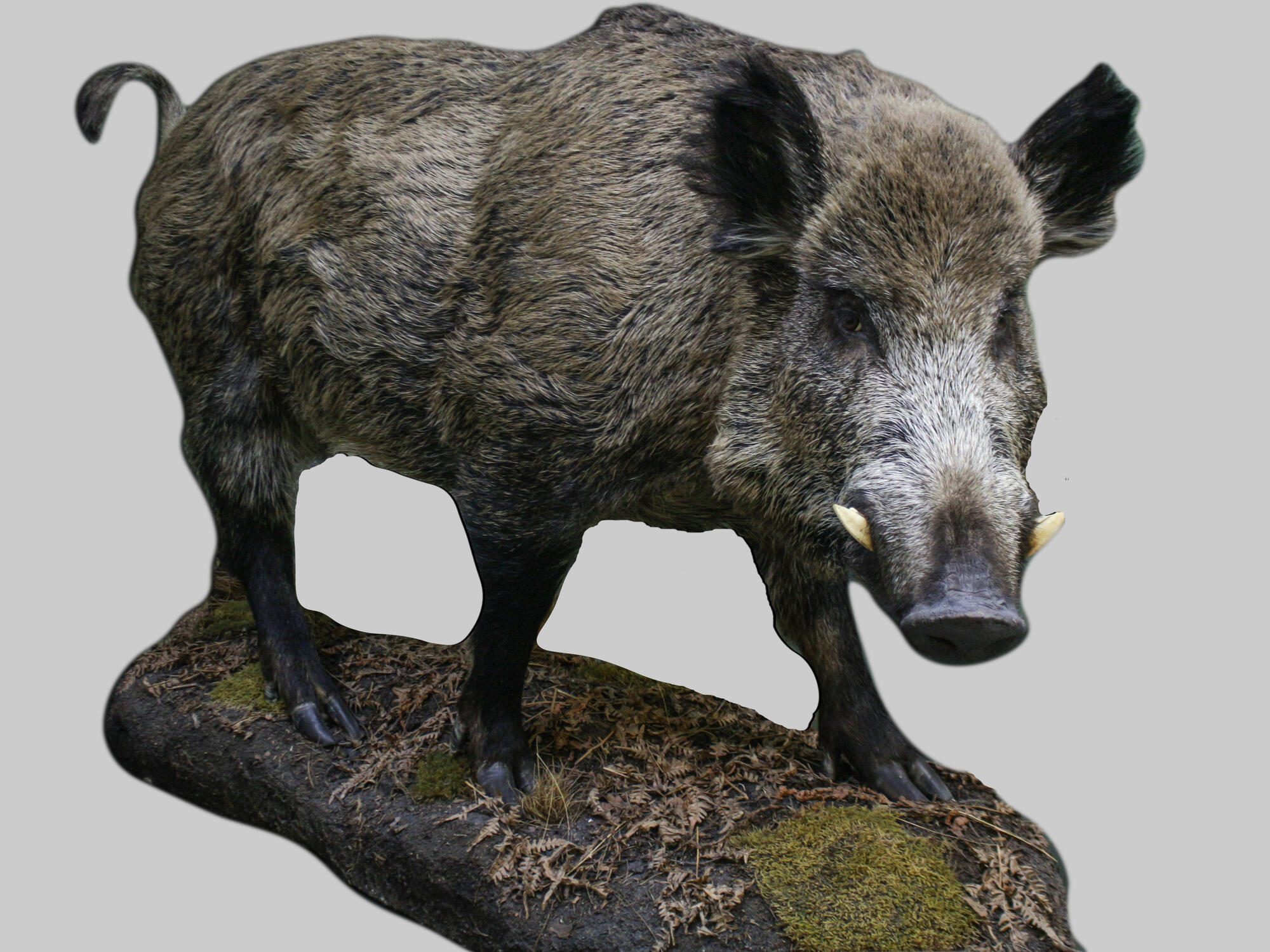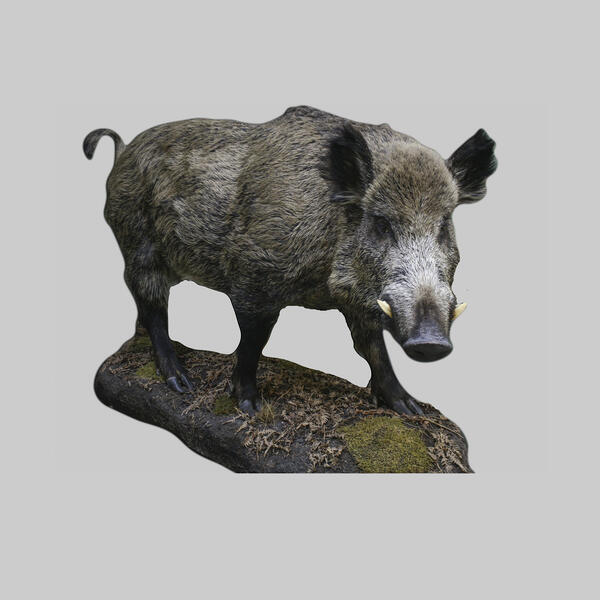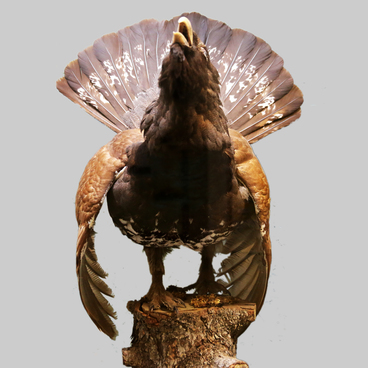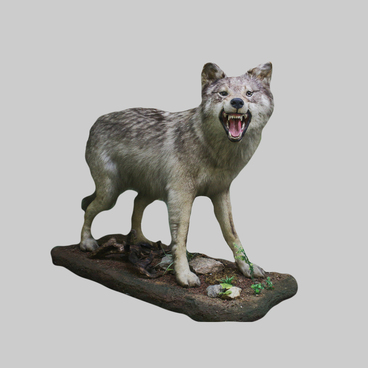The wild boar is one of the hardiest mammals. It is found both in countries with a hot tropical climate and in cold areas, as well as in the mountains, in swamps, and in deserts. The exception is North America, where wild boars did not exist at all until humans brought them there for hunting. To survive, wild boars need to have a source of water nearby.
There is a total of 16 wild boar subspecies, which are combined into four regional groups. Russia is home to as many as five subspecies.
The wild boar has a robust body of up to two meters in length and weighs between 50 and 300 kilos. It has straight ears, tusks, and elastic bristles, which can look different depending on a boar’s age and habitat. The healthier the boar, the grayer its coat. During winter, each bristle splits at the end, becoming very strong and lengthening. During summer, the hair becomes thinner and shortens. A boar’s tail is not too long and has a switch at the end.
Wild boars have many natural enemies: wolves, lynxes, bears, and other predators. Male boars prefer to lead solitary lives. The wild boar’s diet is very diverse. It combines the diets of herbivores (grain crops, bulbs, berries, fresh shoots, acorns) and predators (frogs, small rodents, bugs, bird eggs). The duration of continuous feeding ranges from one to five hours depending on the abundance and availability of food. Wild boars have between one and five periods of feeding activity per day. An adult wild boar eats 3 to 6 kilos of food per day.
Wild boars are resistant to a number of poisonous plants and snake venom. It was the extreme adaptability of wild boars and their ability to eat almost any food that allowed the people of China and Southeast Asia to domesticate this species almost 9,000 years ago.
Wild boars have poor eyesight but very sharp hearing and senses of taste and smell. They can smell a person within a radius of 400 meters. Wild boars are great swimmers. When needed, they can accelerate up to 40 kilometers per hour and maintain this running pace for 10 to 15 kilometers. An encounter with a wild boar can be deadly for predators and humans alike.
There is a total of 16 wild boar subspecies, which are combined into four regional groups. Russia is home to as many as five subspecies.
The wild boar has a robust body of up to two meters in length and weighs between 50 and 300 kilos. It has straight ears, tusks, and elastic bristles, which can look different depending on a boar’s age and habitat. The healthier the boar, the grayer its coat. During winter, each bristle splits at the end, becoming very strong and lengthening. During summer, the hair becomes thinner and shortens. A boar’s tail is not too long and has a switch at the end.
Wild boars have many natural enemies: wolves, lynxes, bears, and other predators. Male boars prefer to lead solitary lives. The wild boar’s diet is very diverse. It combines the diets of herbivores (grain crops, bulbs, berries, fresh shoots, acorns) and predators (frogs, small rodents, bugs, bird eggs). The duration of continuous feeding ranges from one to five hours depending on the abundance and availability of food. Wild boars have between one and five periods of feeding activity per day. An adult wild boar eats 3 to 6 kilos of food per day.
Wild boars are resistant to a number of poisonous plants and snake venom. It was the extreme adaptability of wild boars and their ability to eat almost any food that allowed the people of China and Southeast Asia to domesticate this species almost 9,000 years ago.
Wild boars have poor eyesight but very sharp hearing and senses of taste and smell. They can smell a person within a radius of 400 meters. Wild boars are great swimmers. When needed, they can accelerate up to 40 kilometers per hour and maintain this running pace for 10 to 15 kilometers. An encounter with a wild boar can be deadly for predators and humans alike.



